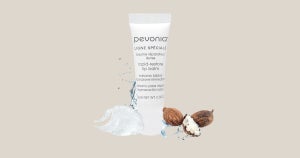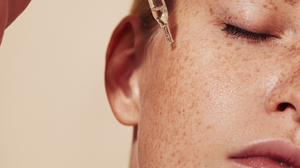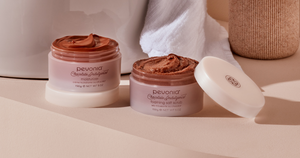
Hair oiling is one of the simplest ways to elevate your beauty routine and support long-term strand health.
Whether applied before washing or after, a few drops could be all it takes to achieve visibly soft, radiant lengths.
Here’s our guide on how to oil hair, complete with step-by-step instructions and the common mistakes to avoid.
How Often Should You Oil Your Hair?
Your hair oiling routine will vary depending on your strand type, lifestyle, and goals.
If your lengths appear dry, damaged, or generally lacklustre, oiling two to three times a week could help to gradually repair softness and strength.
However, if strands appear visibly healthy and balanced, applying oil once or twice over several days is usually enough to maintain shine.
If you’re prone to oiliness, a lighter approach often works best, with one application or less usually being enough to deliver desired results
When to Use Hair Oil
When it comes to hair oil, timing could make all the difference.
Applying a light layer of oil before washing may help hair feel softer once cleansed, as it can coat the strands in moisture and reduce the feeling of dryness after shampooing, while after blow-drying, it works as a finishing step, smoothing flyaways and adding subtle sheen.
And if you’ve ever wondered “can you put oil on wet hair?” the answer is yes — applying it to clean, damp strands after showering could help to lock in moisture and encourage a smoother, glossier look.
How to Use Hair Oil: A Step-By-Step Guide
With the right prep and application, you could enjoy silky, shiny results that last.
Here’s how to oil hair, step by step:
Step One: Choose the Right Oil
Choosing the right hair oil is essential to achieving healthy-looking lengths.
Fine or oily strands tend to thrive with lightweight blends formulated with ingredients like jojoba or grapeseed, whereas thick, coily, or dry textures usually benefit from richer variations such as coconut or argan.
Step Two: Prepare and Section Your Hair
Preparing your hair before oiling is key to ensuring even distribution and coverage.
Start by detangling and brushing your lengths to remove any knots – this helps the oil to glide on smoothly without clumping in one spot.
Next, section your hair into parts, such as four even quadrants, so every strand gets its fair share of attention.
Step Three: Apply the Oil
Now that your hair is prepped, it’s time to rejuvenate and smooth with your oil.
Warm a small amount between your palms before smoothing it through your mid-lengths and ends.
If you want a deeper treatment, you could also work it into your roots but make sure the blend you’re using is formulated for this.
Our Hair Energize Extra-Strength Overnight Serum is designed specifically for use on the scalp, while our Vitaminic Concentrate, De-Stress Aromatic Oil, and Dry Oil Body Moisturizer may be used on the lengths and ends of hair.
Step Four: Distribute and Massage the Oil
Once the oil has been applied, the next step is to ensure it is evenly distributed from root to tip.
Use a wide-tooth comb to gently work the formula through your hair. This ensures every strand is coated evenly without excessive tugging or breaking.
If you’ve applied it to the scalp, massaging lightly with your fingertips could help spread the product more evenly.
Step Five: Leave in or Rinse
Now that your hair is coated, allow the oil time to penetrate before rinsing or styling as needed.
Always follow the directions on your chosen product, but as a general guide, dry or visibly damaged strands often benefit from an hour or more of treatment.
If your lengths are fine or prone to oiliness, around thirty minutes is usually enough, as leaving it longer can sometimes cause heaviness or build-up.
Common Mistakes to Avoid
Hair oiling can be an enriching ritual, but only if you do it correctly.
Even the most effective formulas can fall short when misused, and a few small missteps might be standing between you and the glossy, healthy-looking results you’re after.
Here’s what to watch out for:
Not Brushing Your Hair Beforehand
It may feel like an unnecessary step but brushing your hair before an oil treatment could be essential for detangling strands and ensuring the oil spreads evenly.
Skipping this may lead to uneven coverage, build-up, clumping, or unnecessary tugging.
Over-Oiling
It can be difficult to know how much hair oil to use but more doesn’t always mean better results.
Applying too much product could weigh your hair down, make rinsing difficult, and leave behind unwanted residue. Two to three drops of oil, or a light layer, is usually all you need.
Leaving it in Too Long or Not Long Enough
It’s a common misconception that leaving oil in the hair longer is more beneficial – sometimes it helps as part of a targeted and deeper routine, but done too often, it may cause build-up. On the other hand, rinsing too quickly might not give it enough time to absorb.
So, how long should you leave oil in your hair? Aim for thirty minutes to an hour to let the benefits sink in, unless the formula is specifically designed for overnight use.
Not Being Consistent
Hair oiling is a ritual, not a quick fix.
Skipping weeks or applying it sporadically may not deliver the same results as a steady routine. Consistency could help maintain moisture, softness, and balance over time.
Using the Wrong Hair Oil
Fine strands may feel weighed down by richer oil blends, while dry or textured lengths often need deeper conditioning.
Take the time to understand your hair type and choose a formula tailored to your needs.
Learning how to oil hair is all about consistency, the right product, and a little patience.
Once you’ve mastered the steps and avoided the most common mistakes, silky, glossy lengths are well within reach.
Check out our guide on how often to wash your hair and build a well-rounded routine that suits you.

Related Articles







